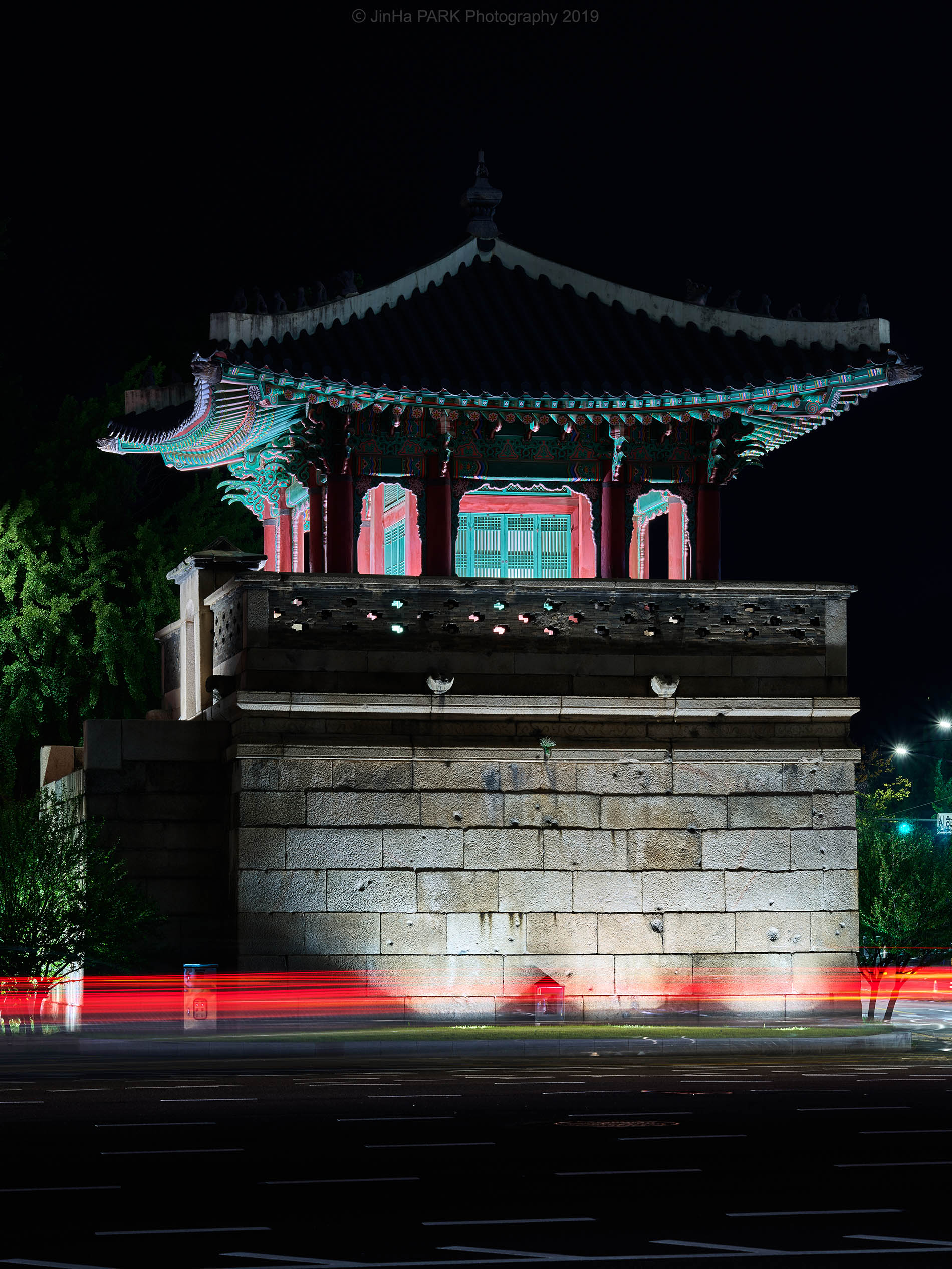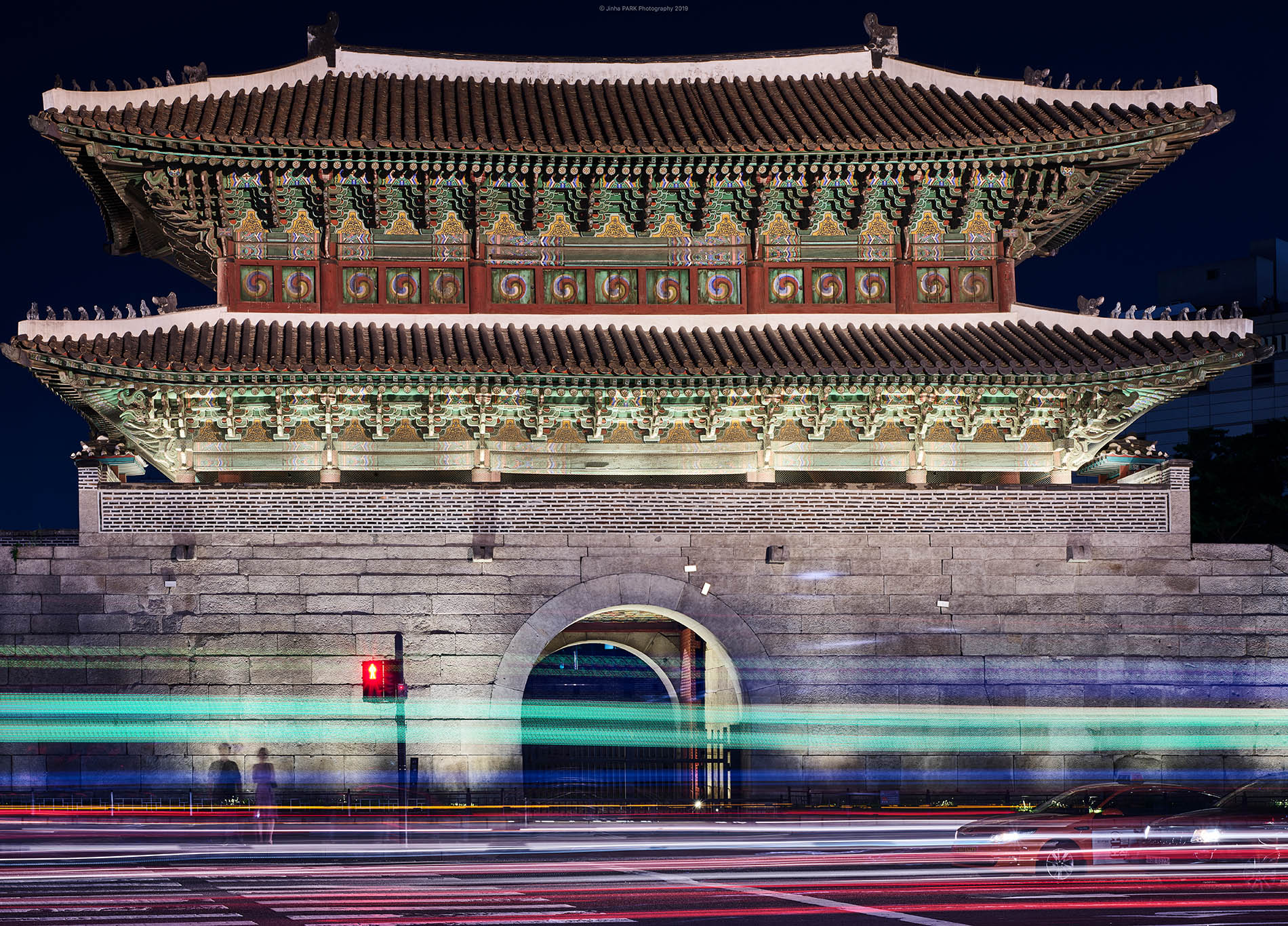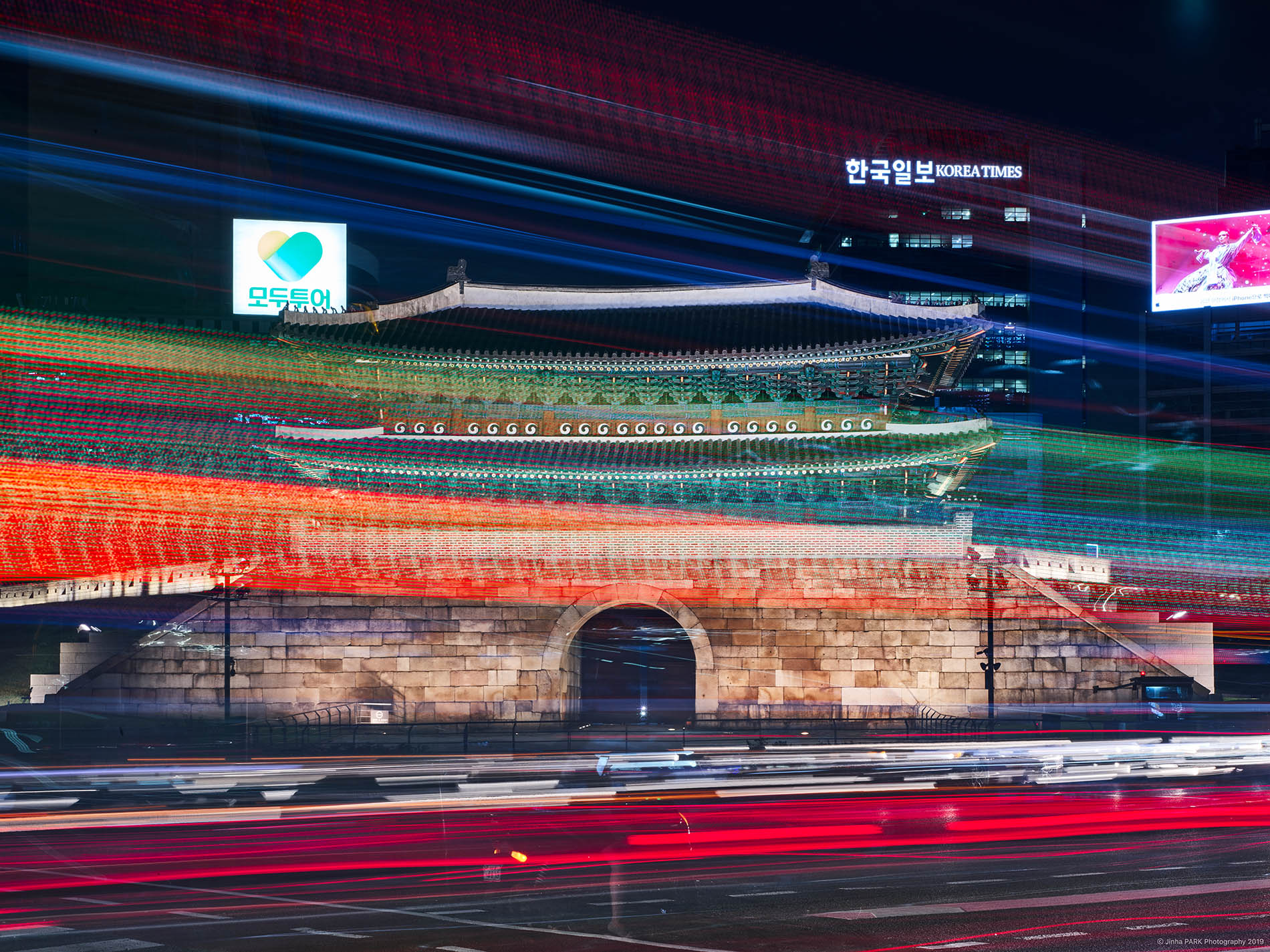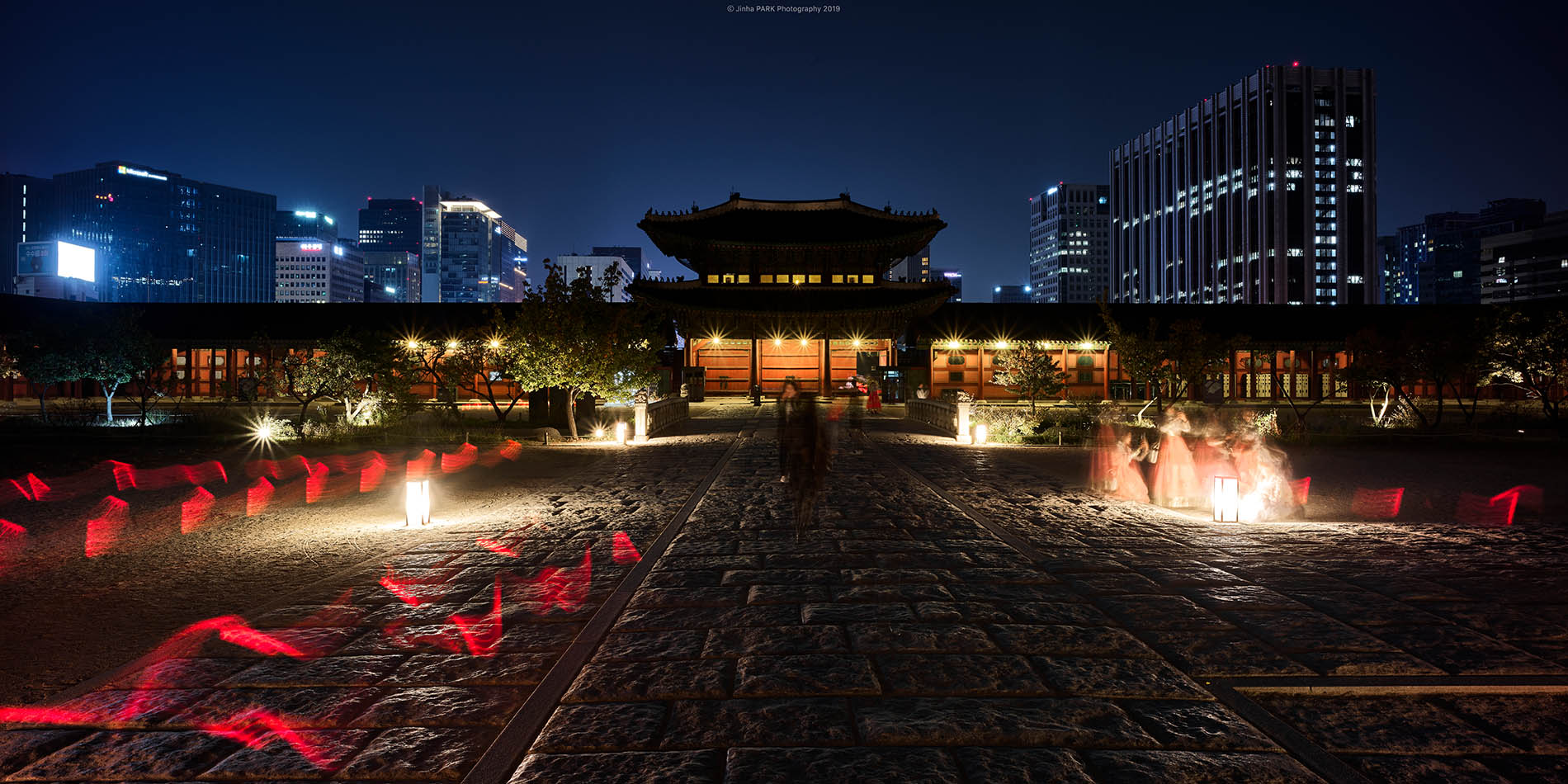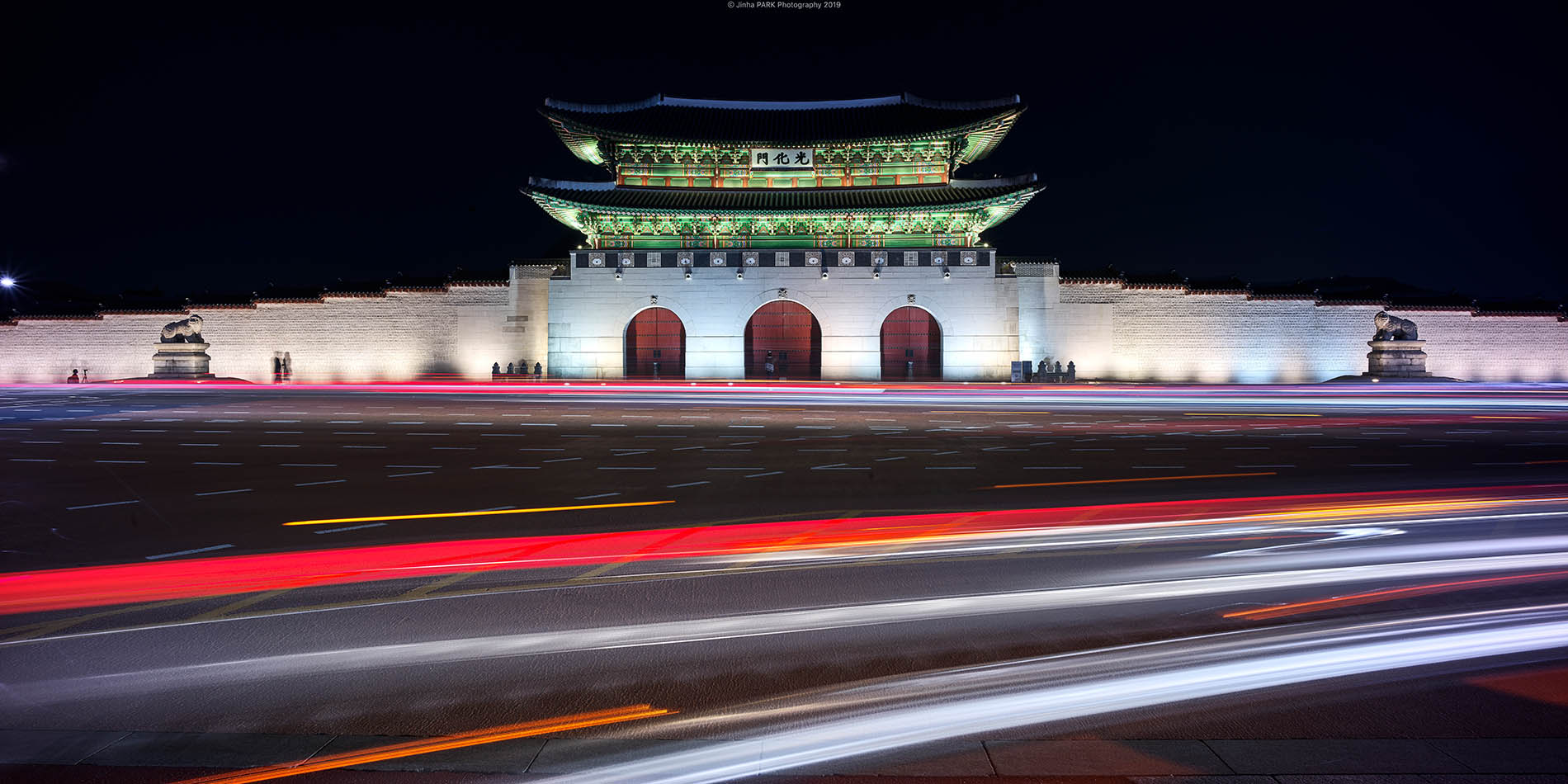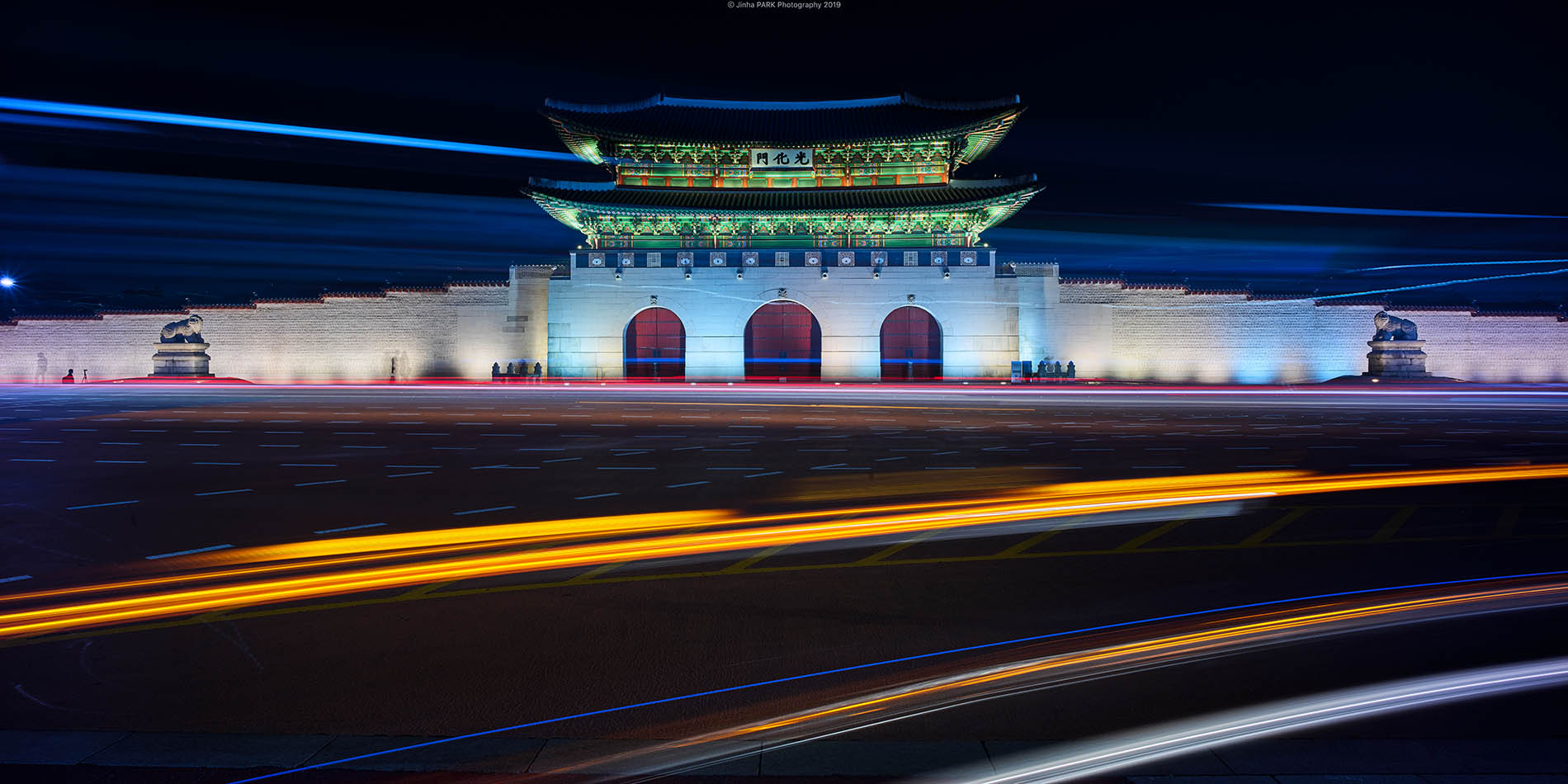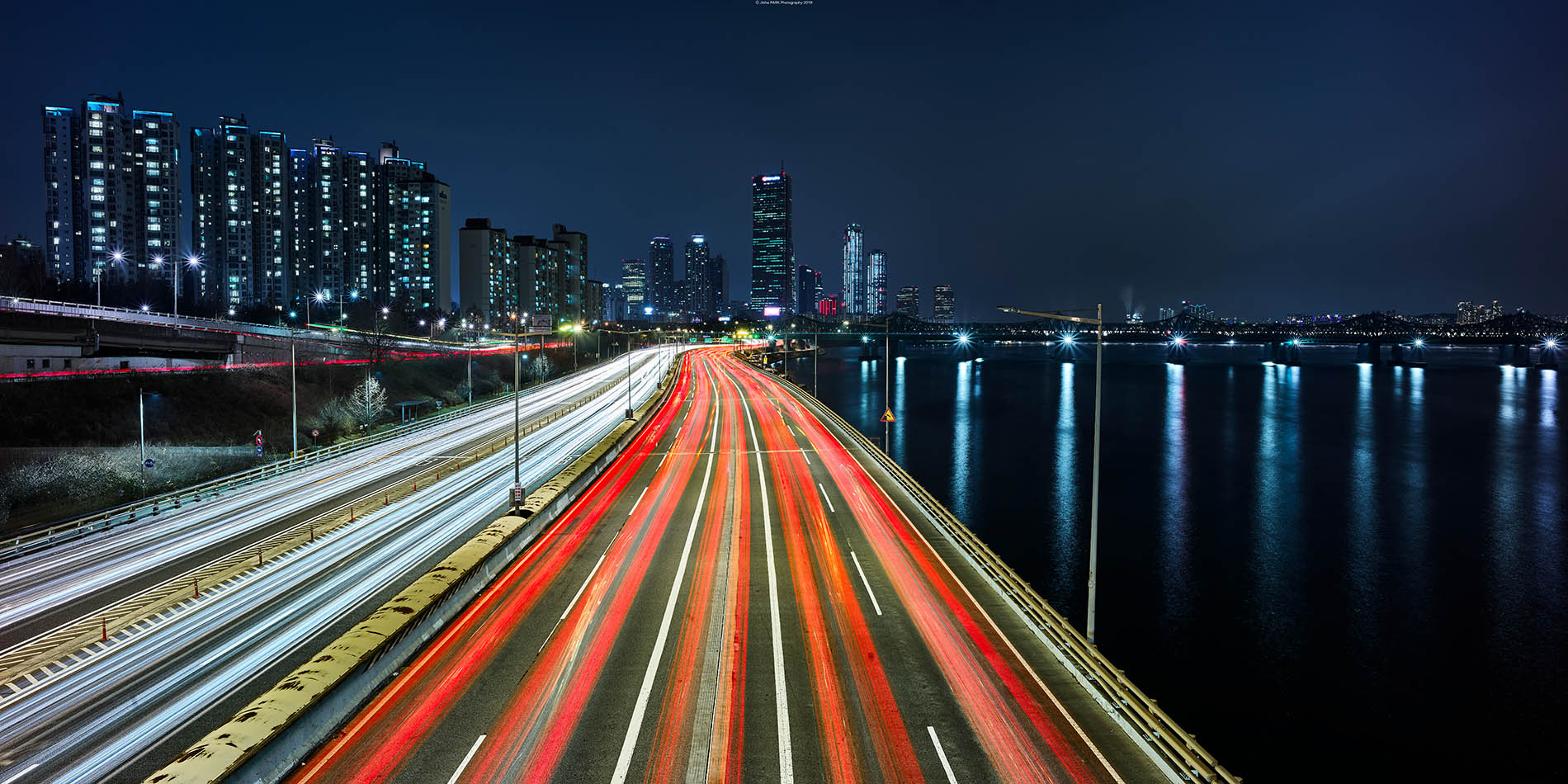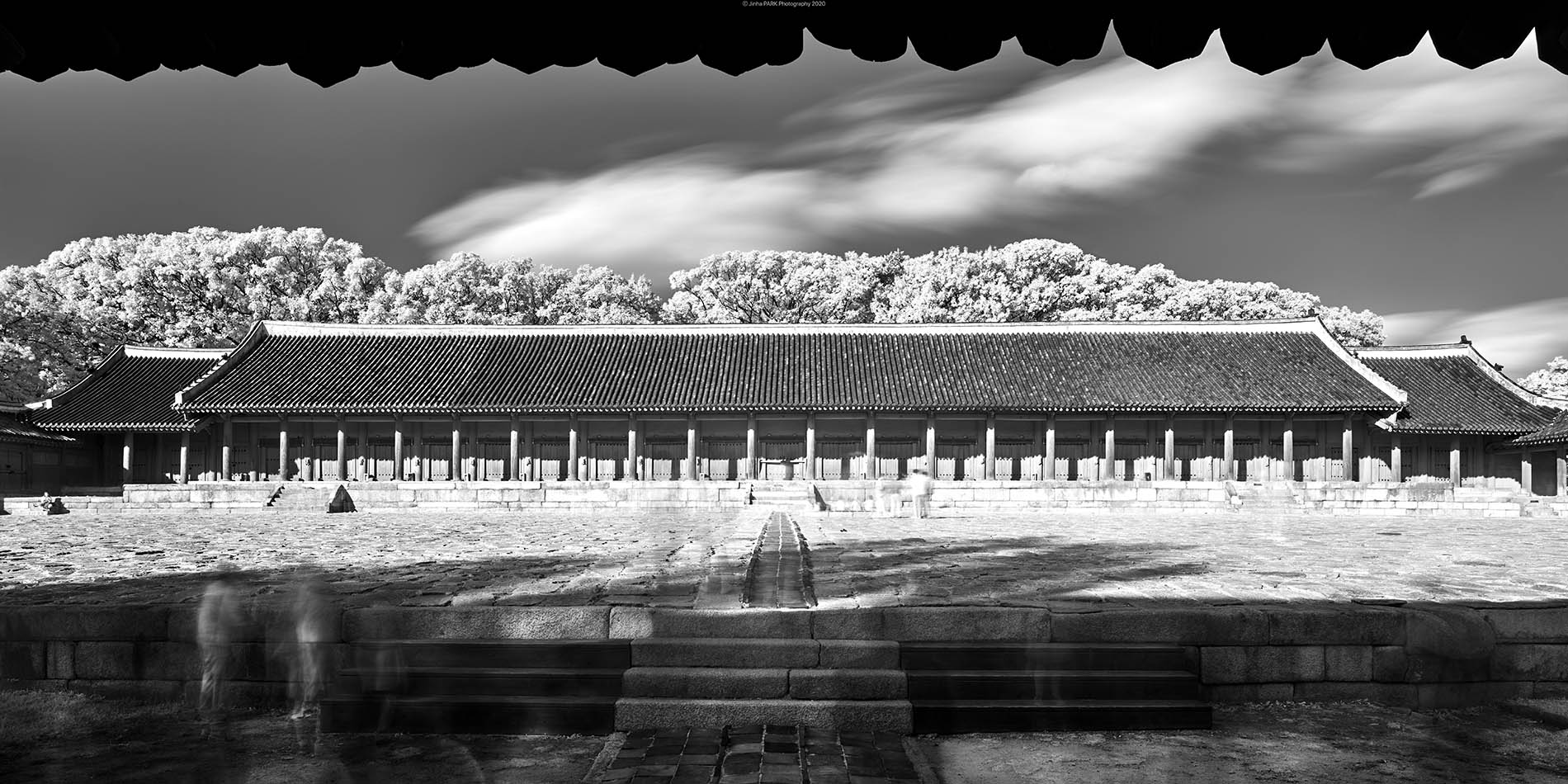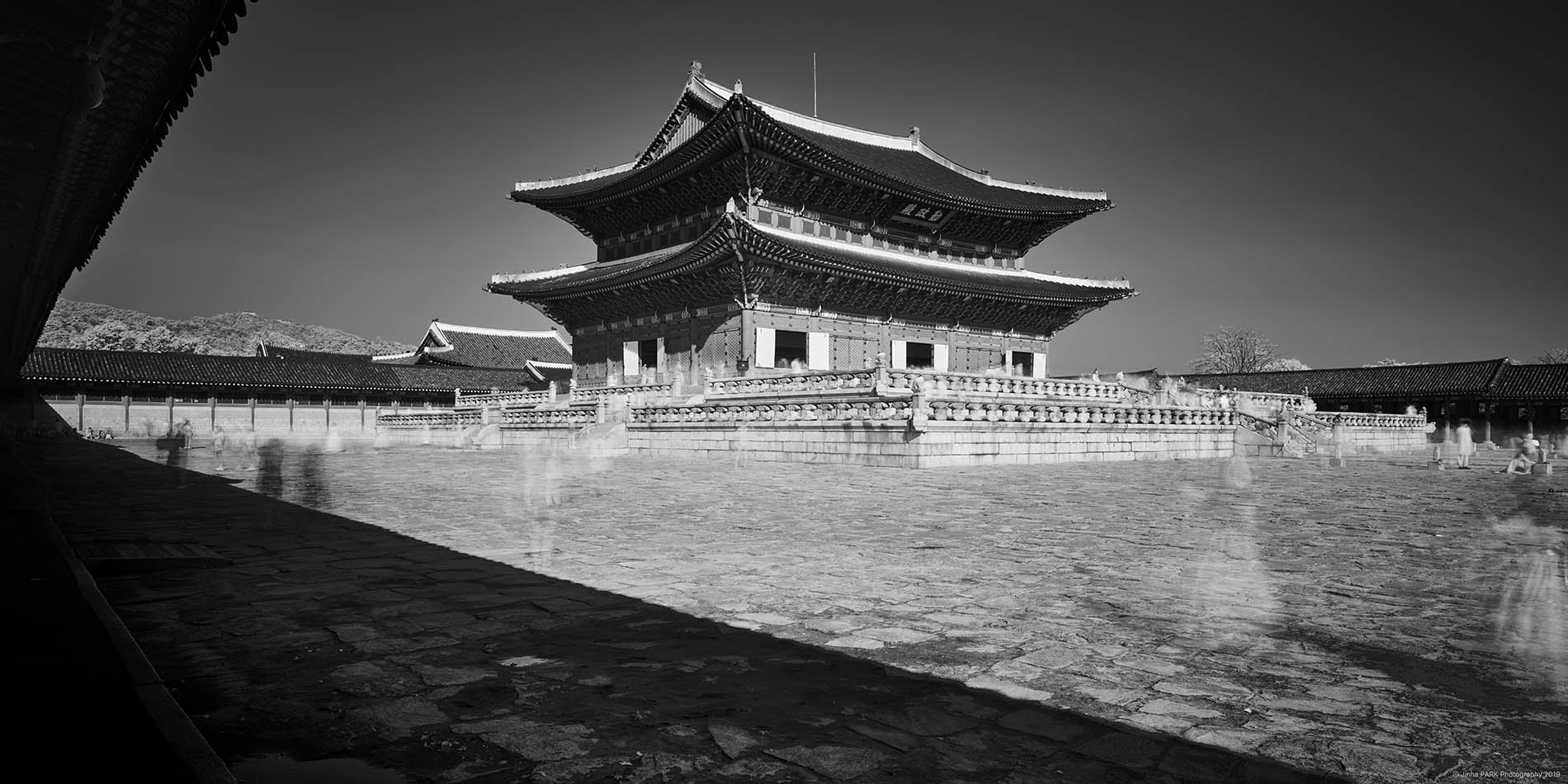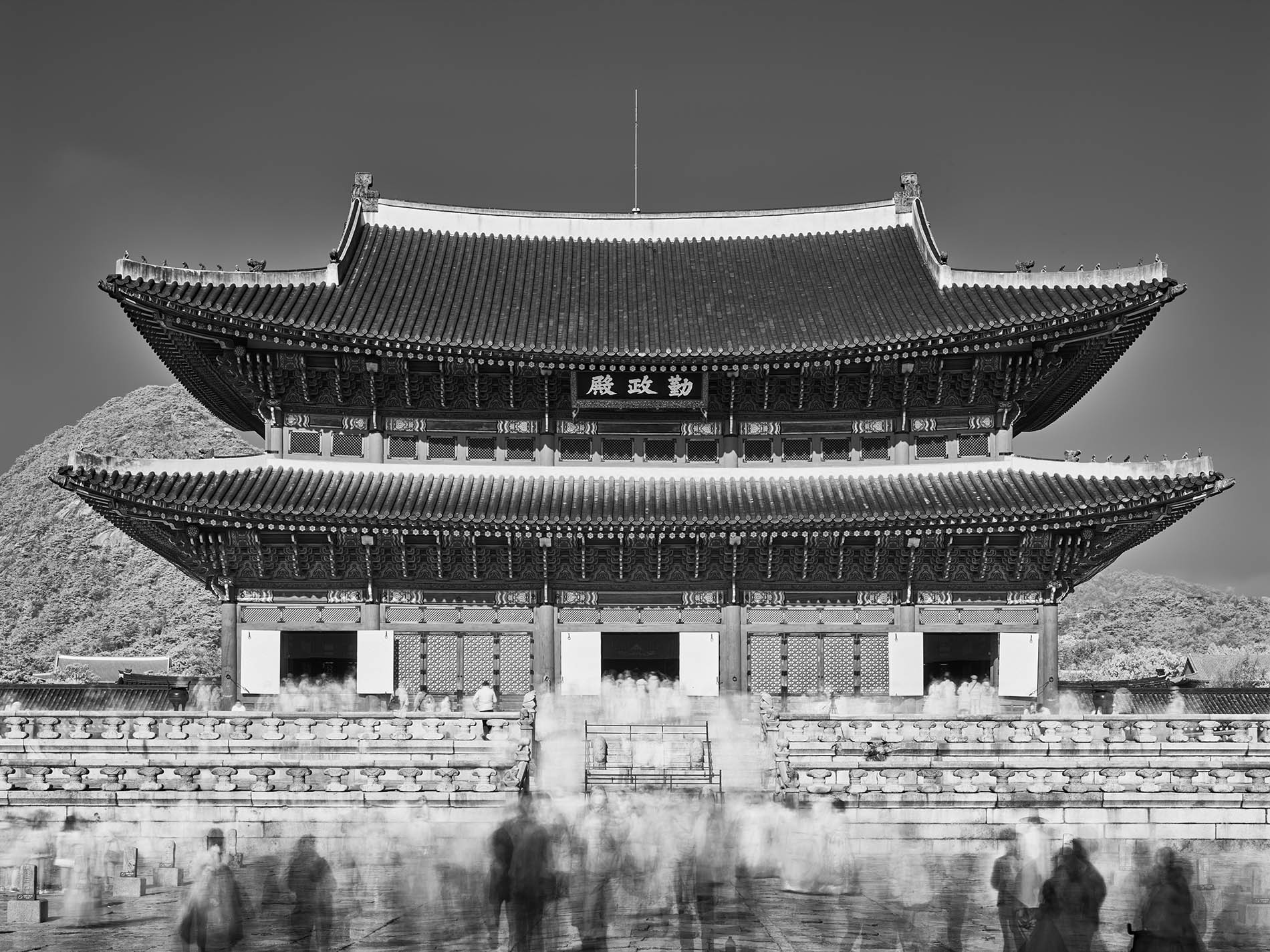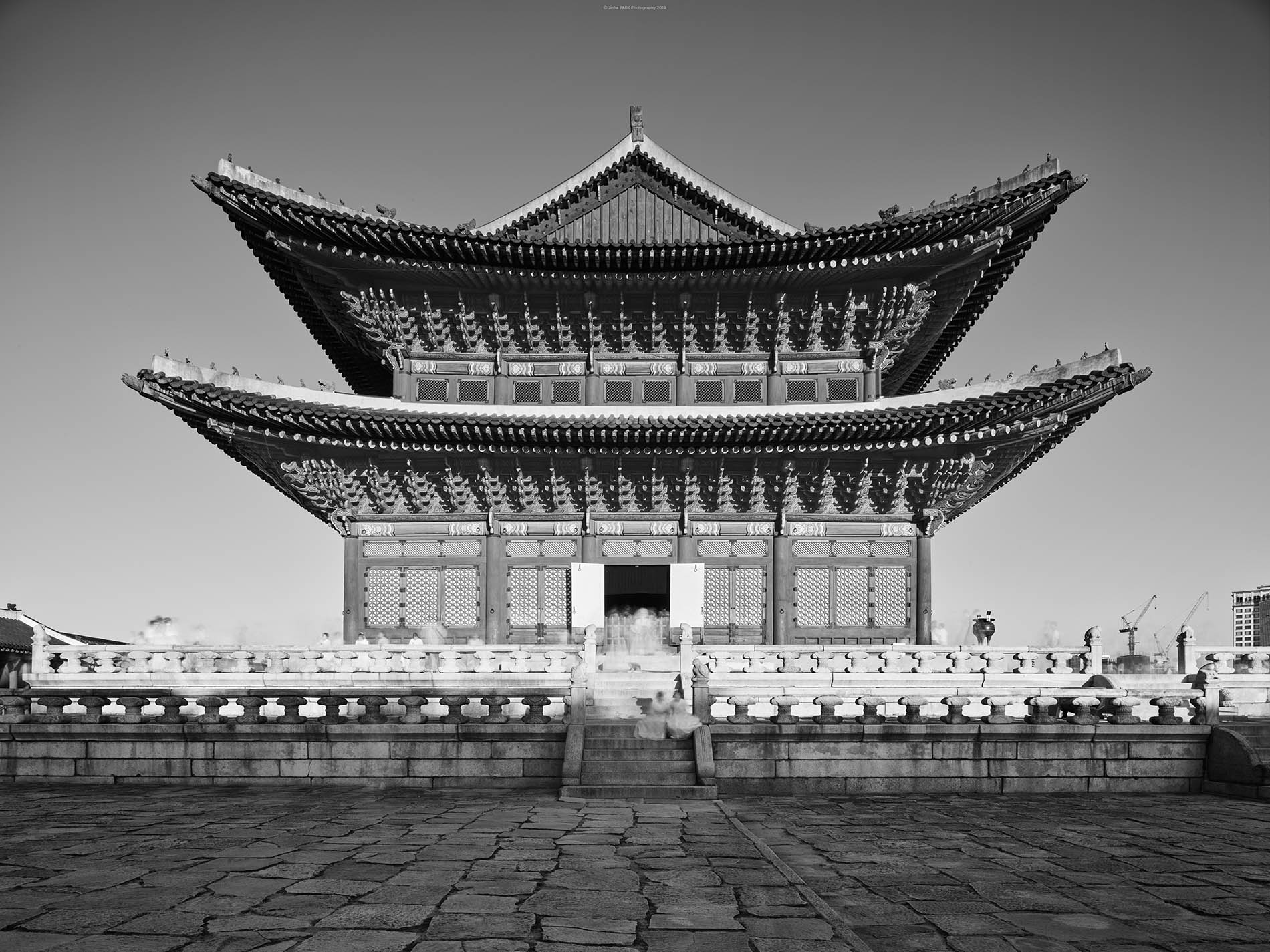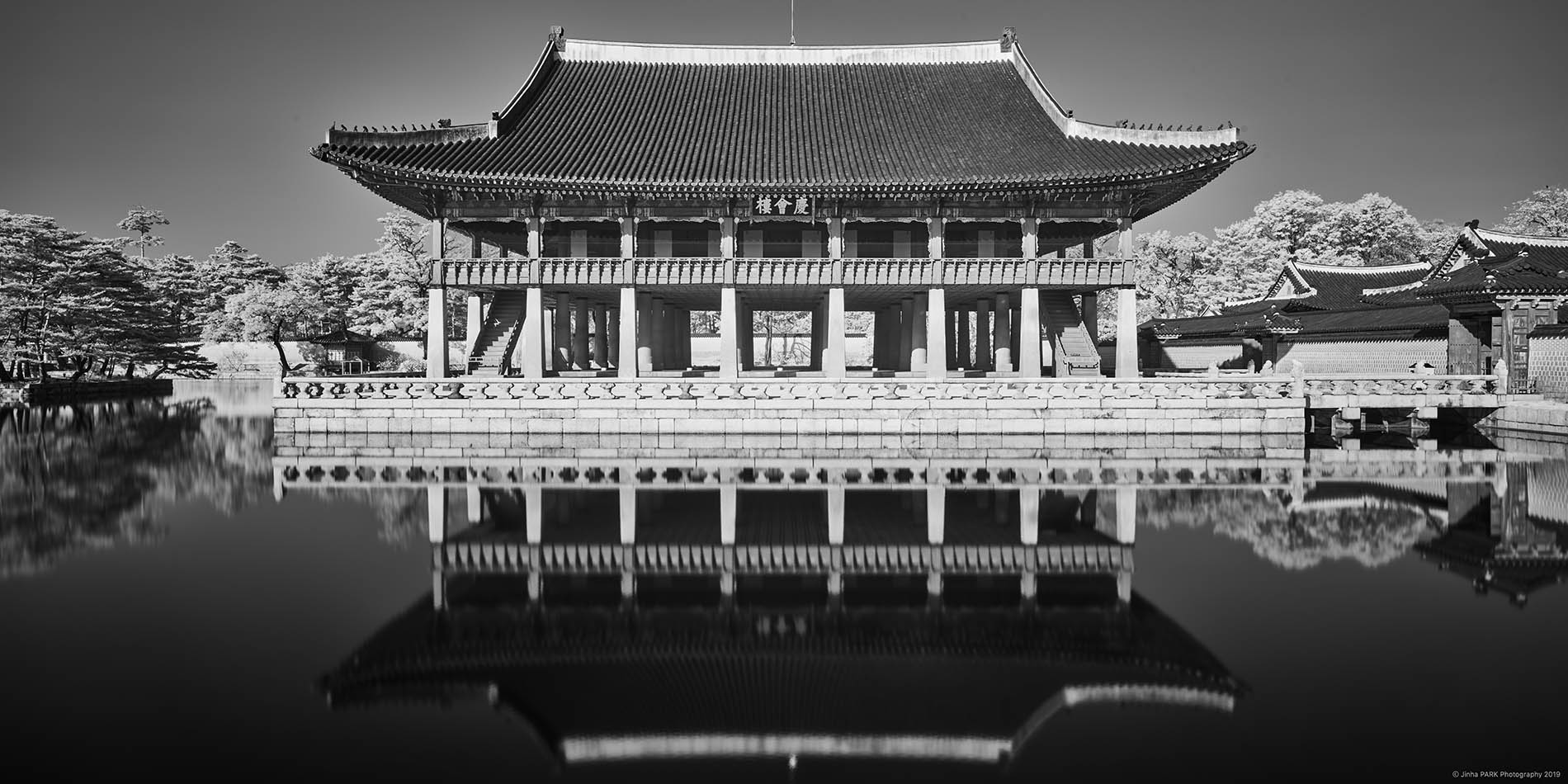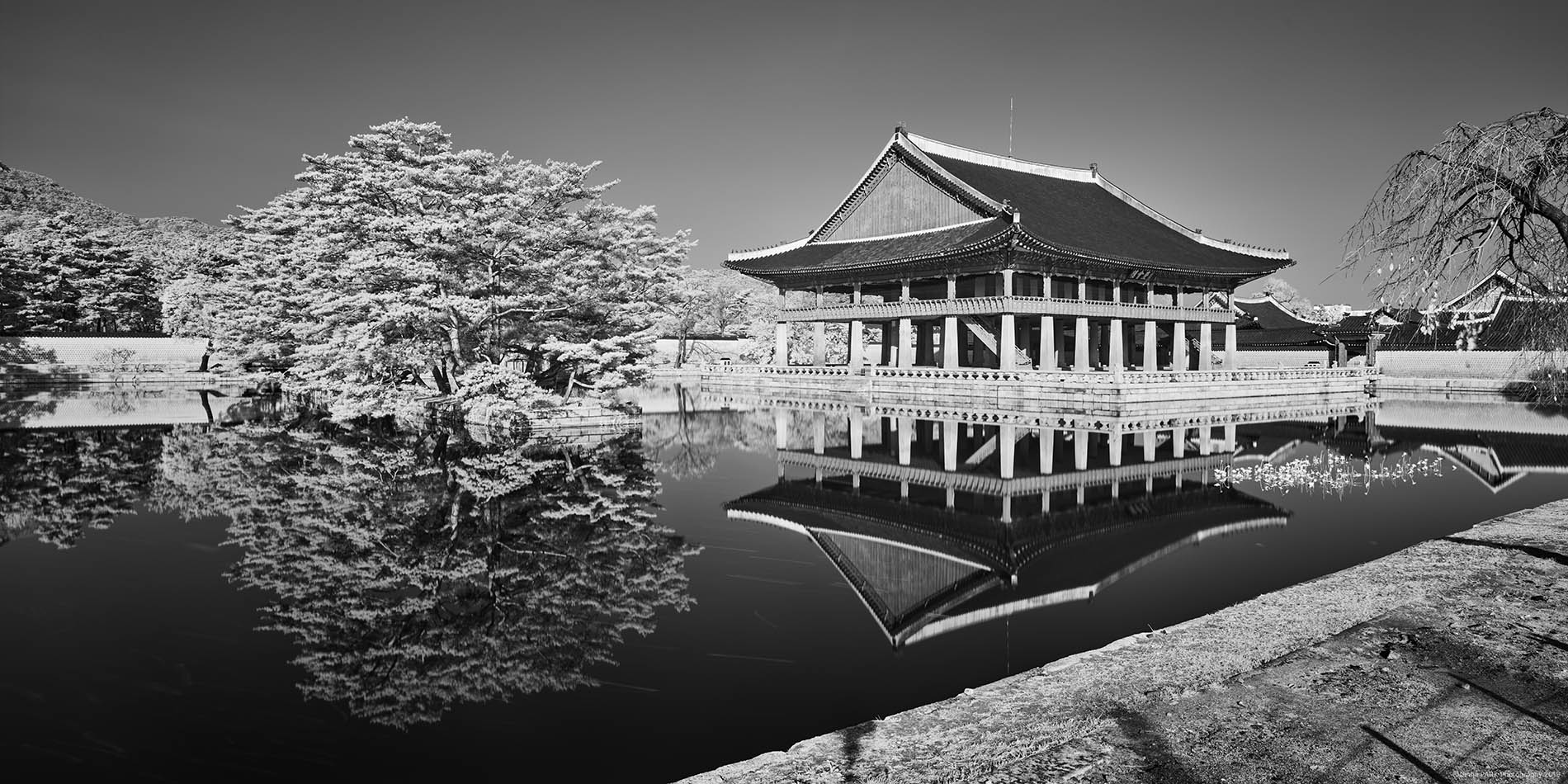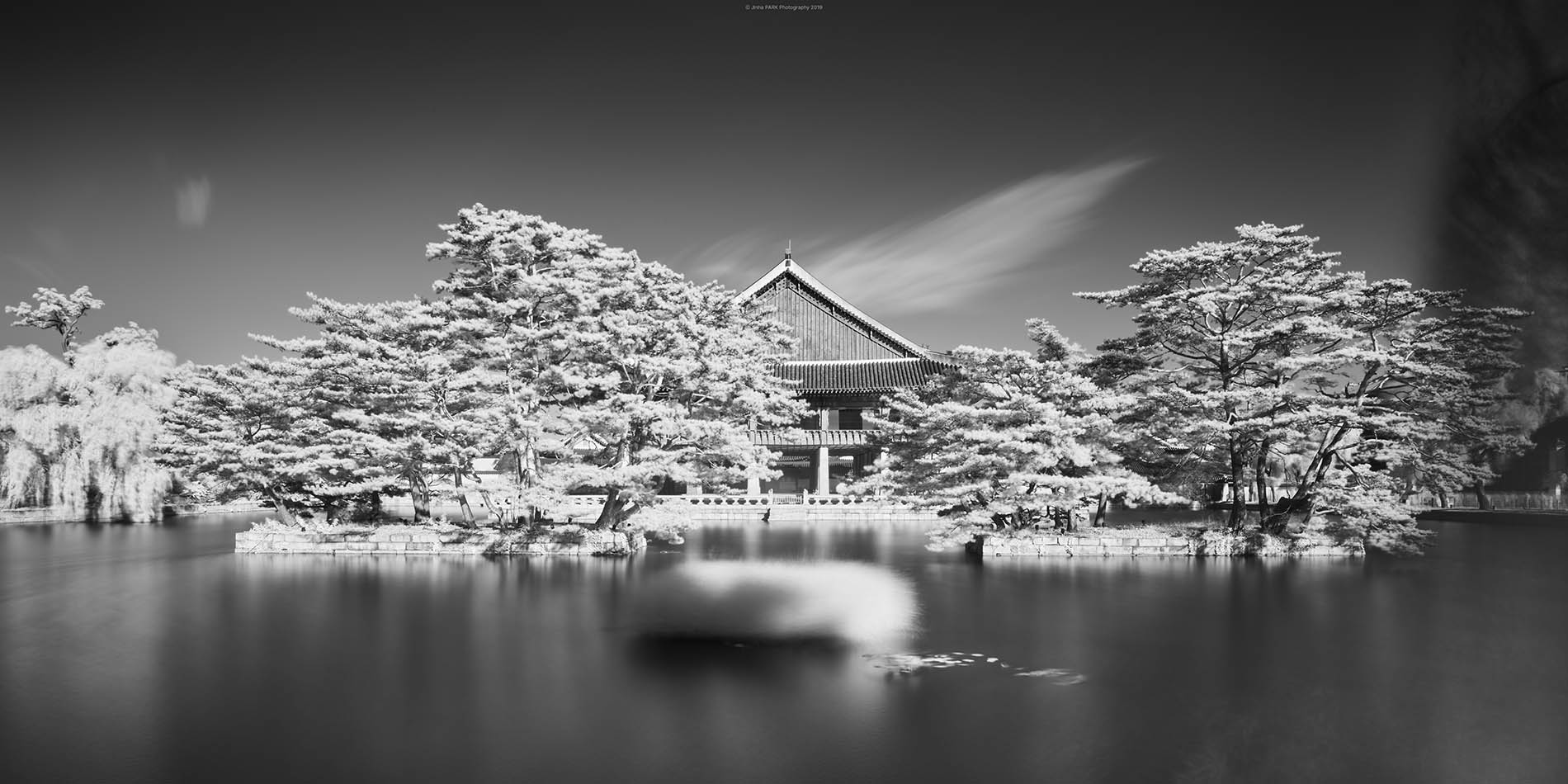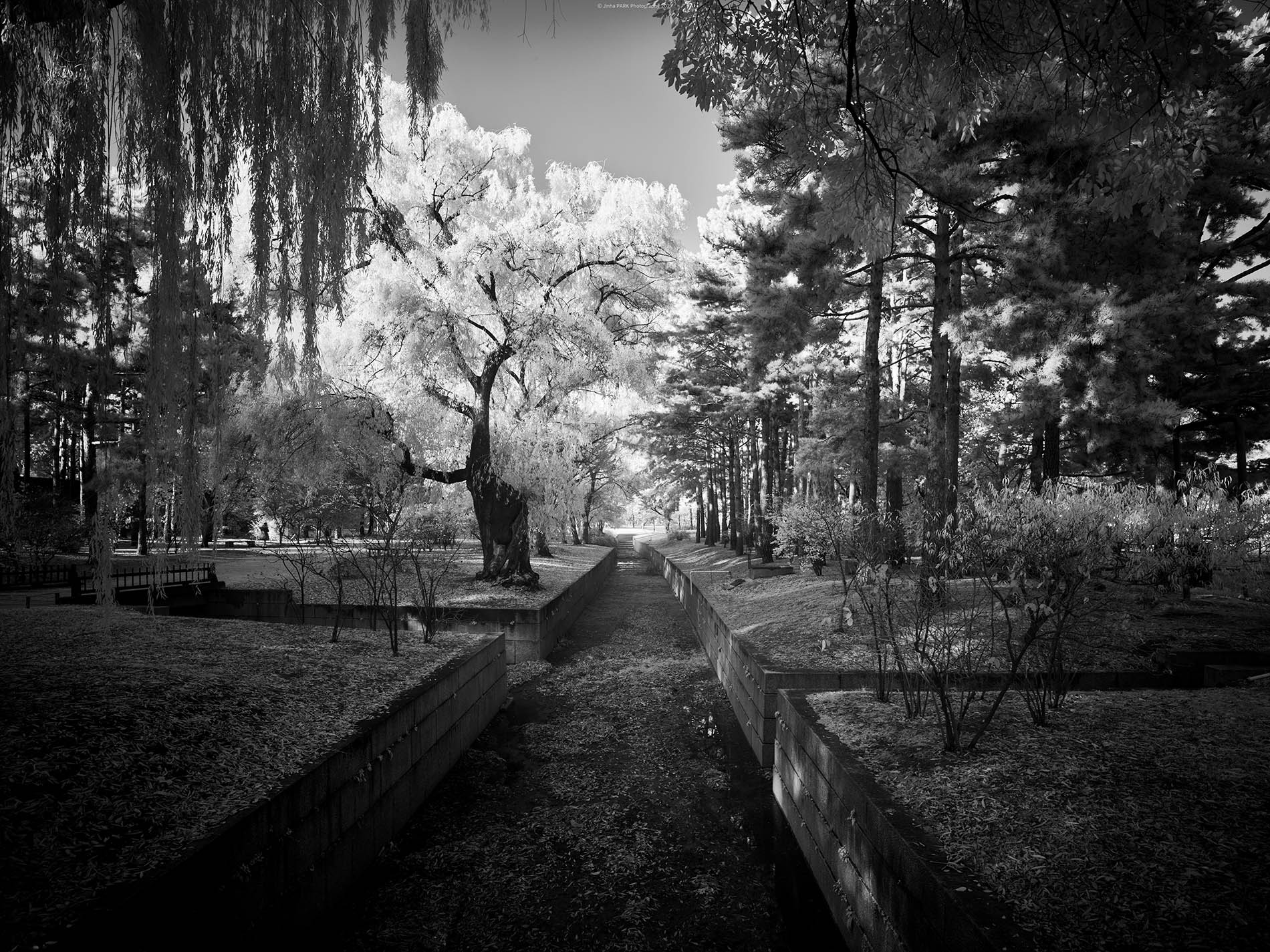


Reading as Chronoscape
Reading as Chronoscape
This section invites the viewer to experience photography not merely as visual representation, but as a landscape layered with the passage of time.
Jinha Park's work overlays temporal traces upon spatial structures, transforming a single image into a chronoscape—a terrain of time.
In this process, the viewer becomes both a reader and a wanderer, navigating an interpretive path between memory and architecture, between the city and nature.
The City of Time, The Time of the City – The Architectural Language of Jinha Park
Jinha Park reads the city not as a spatial container, but as a temporal apparatus. His camera operates not merely as a tool for capturing appearances, but as an instrument for excavating traces of temporality and event embedded within and around structures. Gates such as Gwanghwamun and Sungnyemun, once static monuments, are rendered as dynamic tableaux where past authority, present velocity, and future imagination coalesce.
In his vision, architecture ceases to be merely functional—it becomes a symbolic vessel of collective memory and a conduit of historical rhythm. Echoing Heidegger’s notion of dwelling, these structures transform into existential loci where human life and time converge.
Moreover, the flowing light trails, captured through long exposure, render visible what Bernard Tschumi might call the "trace of events." These photographs function as architectural diagrams of collision—between form and time, structure and movement—articulating the city not as a frozen form but as a living chronoscape.




